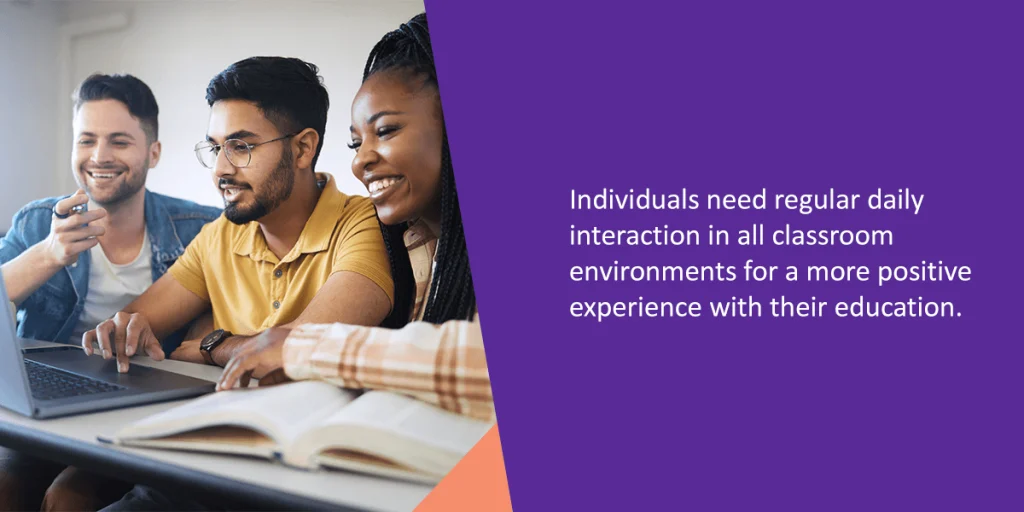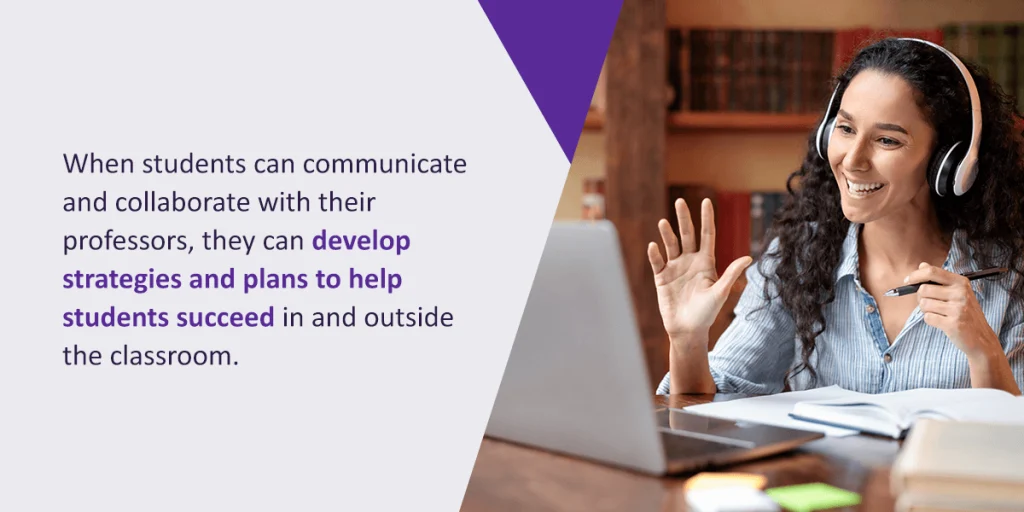
The COVID-19 pandemic brought virtual and hybrid learning to the forefront of higher education. Colleges and universities depended on alternative ways to connect with students and teach materials, but many schools continued to use online methods after restrictions lifted because of the popularity amongst students. Many individuals appreciated the increased accessibility and engagement that hybrid and online classes offered, allowing schools to boost success for more students.
The pros and cons of online and hybrid learning
Online learning offers many benefits to students, and it is changing the way schools approach education and classroom environments. Accessibility is an essential aspect for many students. The ability to connect to classes and lectures anywhere benefits many students, including student parents, working students, and commuters. Online learning means these populations can save time and money on travel and childcare by learning from their homes or another convenient location.

Virtual learning technology also changed how many individuals view this learning type. With more software solutions and features available to professors and students, people can continue to interact in an online environment. Chats and virtual raised hands allow students to ask questions, while breakout rooms enable student discussions facilitated by professors.
However, schools had a tough time adjusting their methods and processes for the COVID-19 pandemic, and many wanted to return to strictly in-person learning as soon as it was possible. Even with the support from students, many professors felt unfamiliar technology and strategies disrupted lessons and learning.
Additionally, not all students have access to the technology required for quality online learning. Students attending school on financial aid might not be able to afford the necessary technology, like personal laptops or tablets, to attend online lectures. Others might lack the essential support they need, like interpreters for deaf and hard-of-hearing students.
Positive classroom environment strategies
Why is the classroom environment important? Students perform better on tests and assignments when they feel a sense of belonging, motivation, support, and participation. Their learning environment or classroom structure determines whether the educational setting meets their needs. Regardless of what your institution’s classrooms look like, the right classroom environment strategies can support your students and their needs.
1. Look at the data
Institutions complete assessments to give you valuable information you should analyze and implement. Otherwise, this data collection is useless. Data can tell you whether students are benefiting from current institutional policies and educational practices, how teachers are managing their classrooms, or how the curriculum has evolved and what may need to change. Watermark’s solutions collect all this information in one place, so you can maximize your evaluations.
2. Encourage diversity, equity, and inclusion (DEI)
We all come from varied cultural backgrounds, and that should be a cause for celebration. Encourage healthy, positive discussions about differences among students and allow an open floor for questions. Understanding is a crucial part of accepting people from diverse backgrounds. Also, understand that not everyone has the same learning style. Adopting new teaching strategies and offering an array of options can help your students feel more included.
Collected data have illustrated the benefits of maintaining an inclusive classroom environment more clearly than ever:
- Students feel supported and heard.
- Students are more motivated to learn, which, in turn, increases their overall productivity.
- The educational experience is higher quality.
- Students and faculty form stronger relationships.
When you integrate DEI into your institution’s classrooms, you can benefit from the importance of classroom environments that support students.
3. Keep things accessible
The importance of a classroom environment for learning means all students can receive an education. As we’ve learned during the pandemic, an accessible learning environment is vital to fostering student success. Accessibility will mean something different for everyone. For some students, it means that they have wheelchair ramps available at every entrance or that they have a seat close to the instructor so they can see and hear everything. Other students value the flexibility to use multiple methods to complete assignments or tests.
Several aspects of remote learning are beneficial to students. The ability to complete school work from home, have deadlines extended, or receive an alternative assignment equal to the weight of the original, allowed students in various situations to still succeed in an otherwise stressful situation. Keeping these practices as we shift back to in-person learning will only help students feel more motivated and supported in the classroom.
4. Build positive relationships
Having someone to rely on can mean the world to so many students and can significantly influence how they perform academically. One of the ways you can build such a relationship with your students is to make sure they feel heard. Take the time to learn their names and get to know a little something about them. You should also listen to their complaints or struggles and try to do something about them, if possible. This compassion will help your students feel heard and seen.
5. Create a sense of belonging
A sense of belonging and community on campuses can help students feel connected to their peers, encouraging them to stay enrolled in your institution and enhancing classroom environment importance. As your professors establish their classrooms, encourage them to make them inviting and open so students can express themselves and feel like they belong there. Students can share personal experiences and backgrounds that connect to their lessons, while professors work to create spaces that support a diverse student body.
6. Support student teamwork and collaboration
Connecting with others requires more than just relating to students. Individuals need regular daily interaction in all classroom environments for a more positive experience with their education. Administrators can encourage more interaction by equipping professors and students with the right collaborative and communication tools, like apps that allow students to work on documents at the same time or virtual discussion rooms.

7. Provide clear instruction and feedback
For students to thrive in their learning environment, they need to know what they are doing well and where they need to improve. Many students might be entering a new type of learning environment when starting higher education, leaving them unsure of how to navigate classroom interactions and coursework.
Professors and faculty should provide students with clear expectations about classwork, processes, and etiquette, like with classroom discussions or using various virtual features. Because professors often grade participation, they should provide feedback about why students got the grade they did and how they can improve. For example, professors might want students to speak more in class or make better use of their virtual discussion boards.
8. Offer space for communication
Another aspect of connection for students is working with their professors and instructors. When students can communicate and collaborate with their professors, they can develop strategies and plans to help students succeed in and outside the classroom. For example, students might share situational information that allows professors to offer exceptions and extensions to assignments.

Administrators can support better communication between students and faculty by requiring professors to host and publish their office hours. Further, they can encourage faculty to share other resources available to students, like tutoring, writing centers, and student success counseling.
Let our higher education software serve you
Data collected over the years has helped institutions transform their curricula and educational policies to better suit their educators and students, increasing their overall success. Watermark’s innovative data solutions can help you advance and develop student success. Let us help you organize your data so you can make meaningful improvements for your students and faculty.
If you have any questions or want to request a demo, you can get in touch today by filling out our simple contact form.















































































































































































































































































































































































































